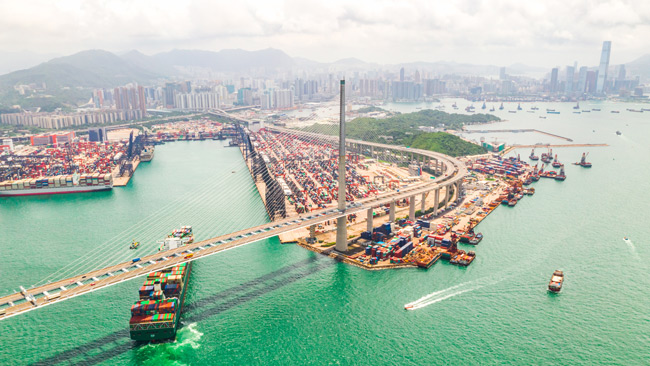
There are thousands of businesses that import from China making large and sustainable profits.
In theory, it’s easy to do well. You pick a product, buy it cheap from a Chinese factory, bring it to market, perfect your marketing/branding, and then watch the dollars roll in!
But as many of you who have tried to import from China will know, getting it right is easier said than done.
Aside from the challenges of nailing your marketing and branding – which isn’t an easy task – there are countless challenges importers need to overcome.
.
What follows is a step-by-step guide explaining in detail how to successfully import from China.
The information presented is a summary of what we’ve learnt from helping hundreds of importers over years scale their businesses.
In that time not only have we refined our own in-house methods to import from China, but we’ve also had a front seat view on what works and what doesn’t from our client’s perspective.
Importing from China Guide: Table of Content
Table of Contents
Click on the contents above to jump ahead to any of the sections.
By following the steps outlined below, you will acquire the basic insights of importing from China:
- Select the right product that you can build a scalable business around.
- Define and create product specification sheets so that suppliers understand your product requirements.
- Source qualified manufacturers with a clear price and quality advantage.
- Send out RFQs (request for a quote) that get a high response rate from the right type of supplier.
- Audit your shortlisted suppliers to narrow down the best options in terms of price, quality, lead times, factory size, and compliance ability.
- Negotiate favorable price and contract terms.
- Create term sheets and purchase orders to ensure specifications are understood by both parties.
- Minimize product defects through sampling and strict quality control inspections.
- Ship your product from China to your destination market.
1. Why Import from China?
Why import from China when it’s without a doubt easier to source products from local suppliers and distributors?
Here are three reasons why China is still the best option for most products.
Price
Even when factoring in shipping, quality control and import duties, the saving from purchasing from a Chinese manufacturer is anywhere from 30% to 150% (for most products) compared with manufacturing in the West or buying from your local distributor.
Flexibility
Chinese factories are in general more cooperative, set lower minimum order requirements for mass production, have greater expertise with tooling and molding, and can produce in larger volumes than what’s available locally.

China’s competitive advantage
China’s labor costs are more expensive than low-middle income countries in South East Asia, but China’s other advantages (developed infrastructure, established component/raw material supply chains, skilled workforce) make up for it.
Apple CEO Tim Cook explains it best:
“There’s a confusion about China. The popular conception is that companies come to China because of low labor cost.
I’m not sure what part of China they go to, but the truth is China stopped being the low labor cost country many years ago. And that is not the reason to come to China from a supply point of view.
The reason is because of the skill, and the quantity of skill in one location and the type of skill it is.”
2. Select the Right Product to Import from China
Good product selection is crucial for success when importing from China, but it’s less important than you imagine.
Of course, you should consider your budget and the overall market conditions for the product. But apart from that, you can enter any market and succeed if you have the right strategy and enough capital to invest.
What follows are 12 key principles for product selection that I’ve learnt through helping 100’s of businesses to import products from China.
The businesses that succeeded followed many of the principles below:
Principle #1: The best thing you can do is build a brand around a product
People connect with brands. They don’t connect with commoditized products that simply compete on price. By building a brand, you are building longevity into your business.

Principle #2: Avoid fad products like the plague
Fad/hyped products have a short lifecycle which makes it difficult to build a brand around the product. The novelty fades.
As mentioned above, focus on building a brand that you can scale and that brings sustainable profit margins.
Another point to note when you import from China is that fad products by nature are new on the market and quality problems normally haven’t been fully resolved. For instance, hoverboards were recalled due to dangerous batteries.
Principle #3: Have at least one unique selling point
You need a point of difference (POD) for your product to be successful when importing from China, but that POD doesn’t need to be significant. It can be a simple as a logo that separates your brand from the crowd, a unique color scheme, better marketing photos, or a fantastic unboxing experience.
Keep it simple. Focus on a one or two PODs to begin with. As you grow, you can start planning and implementing incremental improvements that will separate your product/brand from the competition.
Principle #4: Don’t sell products that you hate
Are you interested in the product? You don’t need to be super passionate about a product for it to be successful. But for instance, if you hate yoga, I highly doubt you will be capable of selling and marketing yoga accessories.
Principle #5: Ignore “experts” who make claims about 10x profit margins
The average net profit margins for eCommerce businesses importing from China is around 20-30%. Don’t pay attention to “experts” that claim that you should be earning 10x profit margins on the buying price from the factory. By doing so, you will scrap great product ideas from your list.
Principle #6: Cost Per Click (CPC) and monthly search volume is important when researching products
Focus less on immediate profit margins and more on cost per click (CPC) for keyword marketing for products. Use tools such as SEMrush for this research.
High value, high conversion keywords cost more. Ideally, the product you choose will have a relatively low cost per click on Google compared with other products ideas, and high monthly search volumes.
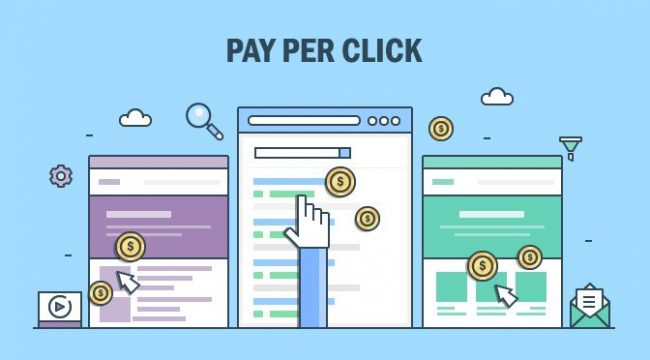
Principle #7: Investigate the sales volumes of a product through Jungle Scout
Use Jungle Scout’s product research tool to pull historical monthly sales data.
Ideally you want at minimum 2000 sales per month for that product. Also investigate seasonality and how that may impact your sales.
Principle #8: Remember that bulky products are expensive to warehouse and deliver
Consider warehousing and delivery costs. If you are looking at flat pack furniture for instance, you need to factor in the costs of warehousing the product and delivering it to your customer.
I don’t agree with the common advice that you shouldn’t import any product bigger in size than a shoe box. It all depends on your circumstances, and if you have warehouse space and capital to throw into the business, then bulky products might be your best option!
Principle #9: Avoid products that retail for below USD$15
In the early stages, avoid cheap products that retail for below USD$15. There are a couple of reasons for this.
Firstly, it’s easier to make a mistake with forecasting net profit margins when working out your landed costs (overall costs) for products that retail for less than USD$15.
Second, the cost of running Pay Per Click ads on Google and Amazon marketing (which you will need to do if you are an eCommerce business) is on average 0.81 cents per click for Amazon and between $0.40 -$2 on Google.
For a cheap product, PPC ads will end up making a significant percentage of your overall costs, which is not ideal!
Principle #10: Pay attention to product safety
Avoid importing products which are unsafe. Product recalls and product liability can ruin your business. As mentioned, over 500 0000 hoverboards were recalled across the US due to dangerous batteries, which wiped out many importers.
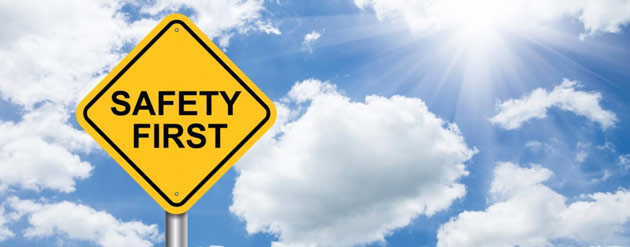
Principle #11: Don’t let perfect get in the way of good
I see too many businesses bite off more than they can chew at the early stages and they end up getting nowhere.
You need a road map for design improvements, customizations, and added product features, but you don’t need to get this all sorted before your first order.
I’d also suggest that you stick to one or two products to begin with and do them well! You can build out your product lines as your business grows.
Don’t try and do everything at once.
3. Product Sourcing and Finding the Right Supplier in China
Step 1. Create your product specs
Before you get started on product sourcing, you need to sort out your product specifications.
Jumping head-first into sourcing without defining your product specifications is the biggest mistake amateur importers make, and it causes all sorts of problems down the line.
Your spec sheet should include at minimum:
- Product description
- The specific materials for the product
- Product dimensions
- The Pantone (product colors)
- Testing requirements for your market (ECE etc.)
- Label specifications and requirements
- Packaging specifications
Why do you need to define your product specs?
If you don’t know your product specifications, packaging and labeling requirements, the compliance requirements to sell into your country, along with the quality demands of your market, then it is very hard to determine which manufacturer is right for you, making it extremely complex to import from China.
Basing your sourcing/purchasing decisions solely on price and how the sales person at the factory makes you feel is a recipe for disaster.
Remember that whenever you are verifying suppliers and analyzing quotes, you need to be comparing like-for-like in terms of specifications.
Small differences in materials, type of paint, dimensions, and packaging, can have a massive impact on price.
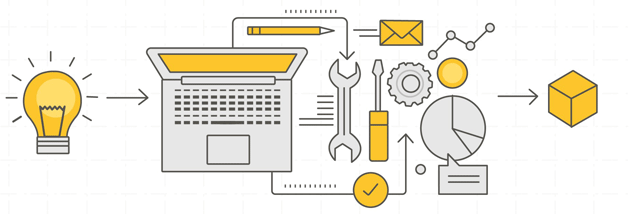
How do you sort out your product specs?
- Research your product online. Understand your target selling point and base product quality from that perspective.
- Get your hands on competitors’ products that sell at your target price point and then pull apart their product, so you know what components and raw materials they use.
Example: if you are looking at selling camera bags, jump online and buy camera bags at your target price/selling point. Make sure you are buying bags that are getting 5-star reviews.
What you will notice when you import from China is that specifications can be very extensive in every product: expensive camera bags for instance will use ykk zippers/fasteners, 600 denier Helix with a durable water repellant coating, seatbelt-grade webbing, waterproof tarpaulin bottom panel, Whisper Hook etc.
Cheap camera bags will use a no-name Chinese zipper and cheaper fabrics for the bags inner and outer surfaces.
- Learn from what industry leaders, competitor businesses, and top Amazon sellers in in your product category are offering in terms of specifications, components, product certifications (CE, RoHS, FCC, GS, etc.), and packaging and labelling standards.
- Read reviews online and see if there are problems with existing products that you can correct for so that you are offering a higher quality product.
- Don’t forget product compliance and labeling requirements. Or US product regulations, read here. For EU regulations, read here.
It’s a lot of work to define specifications, but it’s is a crucial first step when purchasing from a Chinese supplier.
Step 2: Avoiding The Wrong Sourcing Agent To Import From China
Knowing the types of sourcing agents to avoid will help you determine the right sourcing agent for your business. Here are some guidelines that will make your search easier.
Check Out The Sourcing Agent’s Website
Find sourcing agents with websites written in professional and compelling English. Such sites indicate an awareness and willingness to engage with English-speaking companies. They’re likely to be easier for you to communicate with too.
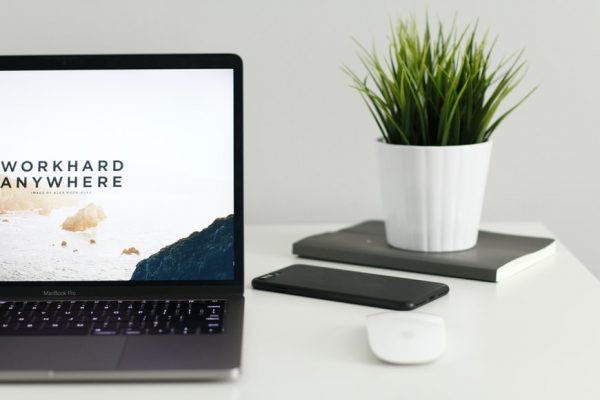
Hands-On Is Best For Quality Control
Avoid sourcing agents who aren’t responsible for their quality control checks. If they outsource their quality control, there are more likely to be errors in the process.
Seek Sensible Kickback-Free Commission Rates
If a sourcing agent proposes a 2-3% commission, chances are they’re creaming off money from their deals. A low commission rate doesn’t equate with a reliable business model for a sourcing agent. Credible agents can’t afford to trade with low commission rates.
Instead, expect to pay around 10% in commission. Researching a company’s reputation via the internet is now relatively straightforward. As a result, corruption is less widespread than previously, but it is still a problem.
Third-party outsourcers can also mean more opportunities for corrupt dealing. You’ll wind up paying more due to costs from backhanded deals and hidden fees. Qualityinspection.org reports that 90% of sourcing agents get kickbacks from companies recommended to their customers.
LinkedIn Helps You Find The Perfect Sourcing Partner
Find LinkedIn profiles for sourcing agents that you’re researching. Here you can investigate further the size, success, and credibility of the companies you’re considering. A credible sourcing agent will have a LinkedIn presence.

Get It In Writing
The sourcing agent should be willing to sign a written agreement that covers every step of the sourcing process. If they want to forgo written agreement at any stage, don’t deal with them.
Reliability Beats Novelty Every Time
Seek out long-term sourcing providers rather than newer companies. The longer a sourcing agent has been successfully trading, the more reliable they are likely to be.
Are Their Customers Happy?
If a sourcing agent is unwilling to provide testimonials, they’re unlikely to provide you with good service. The agent should facilitate testimonial follow-ups, ensuring that the recommendations are legitimate.
In addition, research agency reputation for yourself too. Browse the internet for references to the sourcing company outside of their website. Find companies outside China that are willing to share their experience of your proposed sourcing company.

Don’t Pay Pre-Agreement
A good sourcing agent will not charge a pre-agreement service fee. There should be no charge for initial sourcing work. Avoid agents that ask you for an upfront sourcing fee.
Don’t consider sourcing companies that can’t provide a license and license number. Ensure that the appropriate certification is in place. Chinese sourcing companies’ rules are strict in this respect.
Experience Is Everything
Make sure that your sourcing agent is familiar with your line of work. An agent experienced primarily in electrical goods will not be suitable if you want to source clothing, for example. Equally, a clear description of the work you require will help avoid problems too.
Step 3. Sourcing the right supplier to import from China
When you import from China, there are two ways you can source products and suppliers. The first is going it alone or importing from China directly from the supplier. The second is to use a sourcing company.
Import from China directly from Chinese suppliers
The three main platforms for product sourcing in China are Alibaba, Global Sources, and Made in China.
You can also try AliExpress or 1688.com (Basically a Chinese language version of AliExpress). However, these two sites are best suited to Amazon FBA startups who are importing in smaller quantities.
While Alibaba and Made in China have thousands of suppliers for each product, many of the best suppliers in terms of price, quality, export experience and lead times do not advertise their business on these platforms.
Tradeshows in China
A large percentage of the best suppliers we’ve found for our clients importing from China were found at industry specific trade shows held in Mainland China.
The best suppliers prefer trade-shows because it attracts serious importers who buy in volume and understand international trade.
China’s most popular and biggest fair is the Canton fair. Which gives place every year in the city of Guanzghou.
For instance, if you’re a furniture business sourcing furniture, you can visit The China International Furniture Expo in September in Shanghai.

We also find suppliers on Baidu (China’s Google) and Google.
Alibaba: How to find the best supplier to import from China?
Like all search platforms, Alibaba relies on keyword combinations to bring up search results. I suggest trying multiple variations of keywords when searching for your product.
Let’s take the example of chest strap heart rate monitors.
Potential keyword combinations: chest strap heart rate monitor, heart rate monitor belt, chest strap fitness tracker.
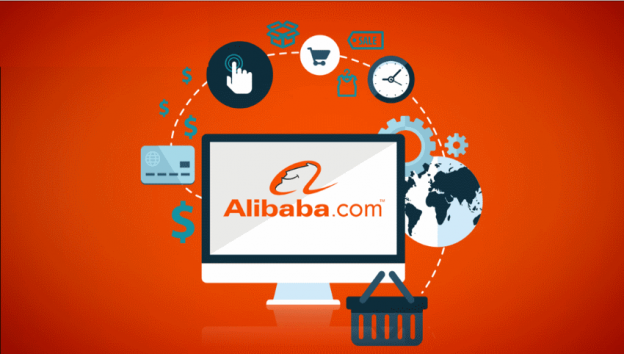
Tips to source suppliers on Alibaba:
Tip #1 – How many years has the supplier been in business? For products that require a high level of expertise to manufacture, like chest strap heart monitors, then you will want a supplier that has at least 3 years of experience.

Tip #2 – Understand your product specifications requirements and any compliance certificates you need for your sales market. This will help you narrow down the list of suitable suppliers.

Tip #3 – Make sure they are not a trading company. There are two ways that you can check this. First, click on the company profile tab on Alibaba. In the basic information column, the business type will be listed as either a trading company or manufacturer.
Beware that some trading companies will falsify this information and list incorrectly as a manufacturer.
The second way to verify is to look at the factory’s website and see what products they sell.
Trading companies sell many goods across different product categories. Factories will specialize.
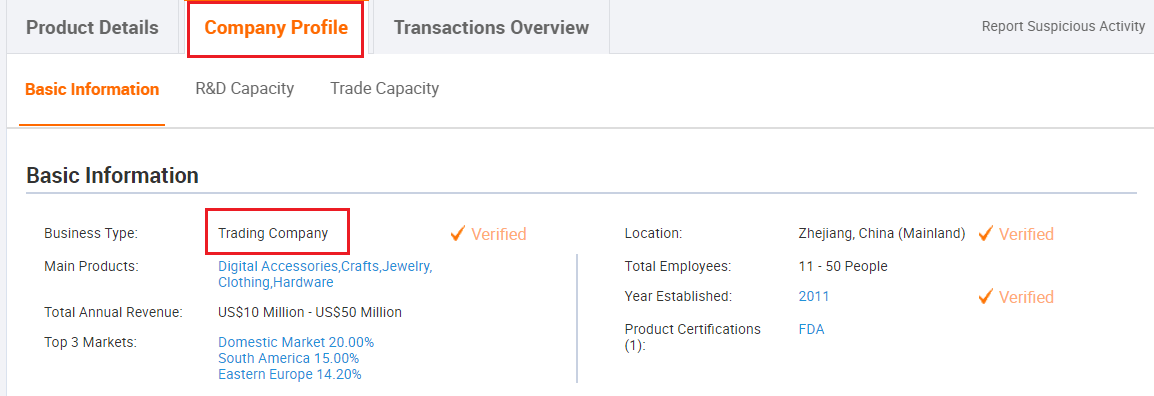
Tip #4 – Check the transaction level
Tip #5 – Pay attention to the factory location. For example, you don’t want to buying electronics from a supplier in Yiwu.
Tip #6 – Use reverse the reverse image search feature on Alibaba to track down hard to find products/designs.

Tip #7 – Use the assessed supplier and gold supplier filters to narrow down your list if it’s too long.
Tip #8 – Don’t forget other platforms when sourcing. Madeinchina.com and Google can reveal factories that don’t list on Alibaba.
Tip #9 – Tradeshows are often where you will find the real winners. Many of the best suppliers won’t advertise themselves on Alibaba because it attracts too many timewasters.
Use a sourcing company to import from China
Using a professional sourcing services is by far the safest way to import from China. A good sourcing company can find manufacturers that you and your competitors cannot.
If they are based in China, they have the advantage of searching in Chinese, tapping into local connections, and utilizing their existing supplier database.
At HUACI Sourcing, we find many of our best suppliers via tradeshows and industry connections.
We also find factories the old school way. We travel to the areas where the product is made to hunt down manufacturers who don’t list on Alibaba and the other sourcing platforms.
This is possible because towns and cities in China tend to specialize in the production of one product.
We narrow this down further by looking at the specific expertise required to manufacture a product, and the raw materials used in production.
There’re typically one or two places where all the best manufacturers will be located for our client’s product.
Once we’ve found the place, we’ll go there and visit suppliers we’ve already sourced. We’ll then drive around the city/town and ask factories that produce solely for the domestic market if they know the best export factories for this product in their town. Factories that produce only for China’s domestic market will have no issue giving you this information as it’s not taking away from their business.
Step 4. Ask Chinese suppliers for quotes
Formatting your email and initial RFQ (request for quote) correctly is crucial.
It greatly increases the response rate from factories and will simplify the process of you tracking and evaluating suppliers.
Your email should demonstrate that you are a professional operation and a potential long-term customer for the factory.
- Your email should be concise with clear calls to action
- Your email should use the correct terms for components, raw materials, and testing requirements
- Your RFQ should contain a simple product spec sheet as an attachment
For an example on how to format your emails and RFQs to factories, follow this link.
Step 5. Creating a list of potential suppliers
Typically, I begin by sourcing 10-15 suitable suppliers. I then narrow down that list to the best 3-5 suppliers based on price, quality (get samples sent to you), lead times, factory size, and compliance ability.
I suggest focusing your attention on the best 3-5 suppliers as any more than that makes it difficult and expensive to arrange samples, and to inspect the factories.
Step 6. How to verify your Chinese suppliers?
Before you choose which factory will manufacture the goods you will import from China, it is crucial to perform a quality check on best suppliers. When verifying if a supplier is right for you, consider the following questions:
Question #1 – Can the factory produce my product? Do they have experience in this product area?
Chinese factories tend be say yes to most things. So, when you ask a Chinese factory about whether they can manufacture a product to your requirements, rarely will you get an answer of no!
If you have doubts, ask for evidence to back up any claims made by the factory
Question #2 – Are they a trading company or a manufacturer?
Trading companies are easy to spot. If they sell many goods across different product categories, they are probably a trading company.
If you want to know why you should avoid purchasing from a trading company, read this article.
Question #3 – Can you communicate effectively with the manufacturer?
If the factory is bad with communication, you probably don’t want to be dealing with them. Imagine when something goes wrong with an order and you are waiting weeks for an explanation!
Question #4 – Where is the factory located? How will this impact lead times and product cost?
China is a massive country. If you are purchasing furniture from Chongqing for instance, you should factor in the extra time and costs needed to deliver your product to the nearest port.
You also need to be buying your product from the right regions.
If you are buying electronics, in almost every instance, the factory should be close to Shenzhen. Read more on China’s geography for manufacturing and how that impacts your product sourcing decisions here.
Question #5 – How big is the factory? Can they manage my order volumes?
There’s no point working with a factory that can’t manage your order volumes. They’ll end up outsourcing the production to another factory (often a worse factory).
Likewise, if you are buying in small quantities, don’t try and buy from a huge Chinese factory as you will not be an important customer to them. Expect to have your order pushed to the back of the line when a big order comes along.
Question #6 – Does the factory have the appropriate certifications for my product?
Unless you want to pay for the test to be done on your product, always work with a factory that has your required test certifications.
For product regulations and testing certification information for the US, read here.
For information on product compliance and regulations in the EU, read here.
A word of caution, many factories will fake these documents. If you are unsure, you can email the test reports to which ever firm conducted the test (usually Intertek or SGS) and they will confirm if the reports are fake.
Question #7 – What markets does the factory sell into?
Factories that make products for the domestic market, and markets in the Middle East and Africa, tend to produce at lower quality levels.
Question #8 – Are they a legitimate operating entity? Do they have an export license?
You should avoid suppliers that don’t have an export license.
Question #9 – Is the factory interested in my business?
If they are not interested in your business, cross them off the list. Simple.
Question #10 – Is their pricing competitive?
If their pricing is nowhere near the mark, then unless you can back yourself in to negotiate down to a workable price point, cross them off the list.
Question #11 – What are their lead times for mass production?
There’s often a big variance in production lead times between manufacturers. If quick lead times are important to your business, then factor this into your product sourcing decisions.
Step 7: Visit the best 3 suppliers
The single best way to verify if a supplier is suitable when importing from China is to visit their factory.
By visiting the factory, you can eyeball the equipment, the factory’s capacity, the quality of the factory workers, the sample room and the factor’s internal quality control systems.
It also allows you to negotiate pricing directly with the factory boss.
For established businesses looking to import from China, this step is crucial and should not be skipped!
If you can’t afford the time to travel to China, you should plan for a 3rd party to inspect your list of potential suppliers.
Step 8: Request a Sample before you import from China
At minimum, I suggest arranging samples from the two best suppliers from your shortlist before importing from China.
Be diligent when you are checking samples from your suppliers. Most people don’t take enough care with the sample checking process.
Pay attention to the look, feel, dimensions, function, performance, and packaging of your product.
I’d also suggest having more than one person check the samples in case you have missed a key detail.
If your product requires mail order packaging, request that any sample sent to you is sent with the proper mail order packaging that will be used on your order.
You should then conduct drop tests on the product to make sure the packaging is sturdy enough to handle being transported to your customers. For information on how to conduct drop tests, read this article. Droptests are a great way for ecommerce sellers that import from China to simulate their package mailing and to identify future potential issues.
If the factory can’t match your requirements, then unless you are willing to compromise on your requirements, the factory is probably unsuitable.
A couple of side points.
It’s common to have samples redone and redeveloped in order to reach your desired outcome. Don’t write-off a factory too quickly if the first sample is not perfect.
If you are developing a new product and samples are expensive to produce, it might be impractical to arrange samples from 2 suppliers. Instead focus on the best supplier and arrange a sample with them.
4. Best ways to import from China
When importing from China, there are three main ways to import your products.
- 🥇Using a professional sourcing company 🥇 where a whole team of experienced, ‘on the ground’ staff can communicate and negotiate face-to-face with suppliers, oversee each stage of the import and perform quality control checks.
- Importing directly from the supplier, generally using websites such as Alibaba to speak with factories and mainly all through online communication.
- Using a buying agent, usually working with 1 person or a group of people to assist in importing goods.
Each of these ways of importing from China has their own advantages and disadvantages. As a professional sourcing company, HUACI Sourcing places emphasis on having a clear, defined process from the beginning and experienced staff to handle any sourcing request.
🥇 Importing with a professional sourcing company
The final way to import from China is by using a professional sourcing company (also known as buying office).
The difference between a sourcing agent and a professional buying office is that there is a defined process in place along with a team of experienced staff, ensuring quality sourcing for each importer.
The team follows the same process so all the steps are done correctly in an order, reducing an importer’s risk.
Within the import process, staff are required to obtain a minimum number of quotes from potential suppliers and give a Sourcing Report to show why the shortlisted suppliers have been chosen.
These suppliers should be found through a range of sources including the buying office’s existing database of trusted suppliers.
Watch how HUACI Sourcing helps importers import from China
.
From factory audits to signing off samples, a professional sourcing comapny has a “Quality Team” to assess factories and products. Due to the scale of manufacturers the buying office already deals with, many audits are already complete so there is no additional cost to the importer.
The Quality Team follow a set process to sign off samples by checking the product itself, the product assembly, the instruction manual and packaging. As well as the internal Quality Team, there should also be a professional, full time Quality Control Team all over China, readily available to carry out quality control checks in all stages of production. Here, only acceptable quality levels of mass produced goods are allowed to be shipped to the importer.
Buying offices are able to export under their own licence, meaning they can negotiate and purchase in the Chinese local currency (RMB) so manufactures don’t need to factor in various charges and exchange rate fluctuations, often leading to a better price.
In terms of payment, there is also possibility to provide credit to importers which can then be as good as 0% deposit 100% 90 days after bill of lading.
Importing direct from China
Importing directly from China as an importer, if done right, can be an advantageous way of doing business. It can be quick and convenient to source products on Alibaba, where the platform provides a range of suppliers all in one place. The conversations are usually quick and they can provide their “quotes” within the same day.
However, Alibaba can be overwhelming. There are thousands and thousands of suppliers to choose from, all selling similar (if not the same) products with different prices, and how can you know which ones are best? Sometimes importers get lucky and they find a great supplier for their product.
For example, you are looking to import sportswear and you find a supplier who can produce 5000 sports leggings and 5000 sports tops. When your order arrives, it all seems fine and you place another order.
This time, as things went so well, you want to double the order. Once the 10,000 sports leggings and 10,000 sports tops arrive, they seem completely different from last time, the stitching is coming away from the seams and the colour of the clothes doesn’t match the previous order. Now you have 20,000 sportswear items that cannot be sold.
Why does this happen? When choosing a supplier on Alibaba, the companies can be a factory, a trading company or both.
Often, these companies are a trading company and so they will outsource the manufacturing to different suppliers; hence the difference in products each time an order is placed.
As an importer sourcing China manufacturers, you may have little to no experience dealing with China and encounter cultural and language barriers. Being unable to have an in-depth conversation with Chinese manufacturers and discuss any challenges in detail can put an importer at risk of receiving low quality goods.
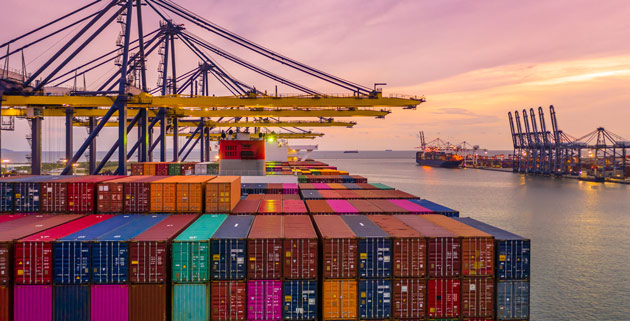
Importing with a buying agent
Often, companies importing from China will look for a sourcing/buying agent when they need help with communication or if they are simply too busy to organise the import. Sourcing agents in China are able to speak in Chinese with potential suppliers meaning smoother communication and negotiation. As the Chinese sourcing agent is usually based in China, they can attend all trade shows and have access to sourcing websites in the native language.
In theory, agents are supposed to shop around to find the best deals for a customer that import from China but in reality, they often engage with few factories and select based on how good their relationship is.
Basing the choice of supplier solely on the agent’s existing relationship with them, means the agent is likely to side with the manufacturer more than the importer. When quality issues arise, more often than not, the agent is negotiating with the importer rather than the manufacturer!
Although a sourcing agent may be very skilled, they may not necessarily be trained or experienced in Quality Control and Quality Assurance. When you import from China, quality is usually a top priority on an importers list and therefore, the correct quality checks should be carried out.
5. Price and Contract Negotiation
Chinese factories are VERY savvy with negotiations. If you don’t come prepared, expect to pay over the odds for your product.
To get the best results with negotiations with Chinese suppliers, follow the 7 steps below:
Step 1
Only negotiate with shortlisted suppliers. It’s a waste of time negotiating with suppliers that can’t meet your quality requirements.
Step 2
Do your research. You need to know your product specifications and bill of materials; you need to know the factory and where they are based in China; you need quotes from several factories, so you have points of comparison; and you need to understand the production methods for your product.
Without this information you can’t negotiate effectively, and you will lose credibility.
Step 3
Form a clear negotiation strategy based on your desired outcomes for price, lead-times, and quality level.
For instance, is price your main concern?
Or is it crucial that your factory use the materials and components that comply with a standard?
Are you willing to pay a slightly higher unit price for a factory that has quicker production lead times?
Step 4
Understand your factory. Is it a relatively new factory that is willing to offer better pricing and lead times because you will be one of their first customers?
Alternatively, is it an established supplier that has high MOQs (minimum order requirements), a strong base of existing clients, and little interest in your business?
Step 5
Negotiate with the right person at the factory. For small to medium size factories, it’s best to negotiate with boss as he/she is the main decision maker and has the final say on whether they can reduce prices below the standard rates.
Step 6
Present a good backstory and business case. Gone are the days when every factory in China is dying for your business no matter the size of your purchase order.
By presenting a clear business case the factory will also understand what you are trying to achieve and what they can do to help.
Step 7
Don’t forget payment terms when negotiating with your supplier. The standard payment terms are a 30% deposit, with the 70% balance paid when the goods have been mass produced and have successfully passed a pre-shipment inspection.
Step 8
Stick to your guns. Back in your research and if you’re visiting your supplier to negotiate prices, don’t be persuaded by expensive lunches and emotional triggers.
6. Landed Costs and Working Out Profitability
Your landed pricing, or landed costs, are the total costs involved in producing your product and importing your product from China to your warehouse in your sales market.
For eCommerce sellers that import from China, you might also want to include Amazon fees and courier costs for delivering your product to your customers.
Why is important to calculate your landed cost when you import from China?
Working out your landed cost allows you to determine if the profit margins from importing your product are sufficient and sustainable.
Landed costs also act as a basis for price negotiation with your suppliers.
If your landed costs only allow for a 5% profit margin compared with the lowest selling price in your market, you’ve probably done a poor job of sourcing and price negotiation.
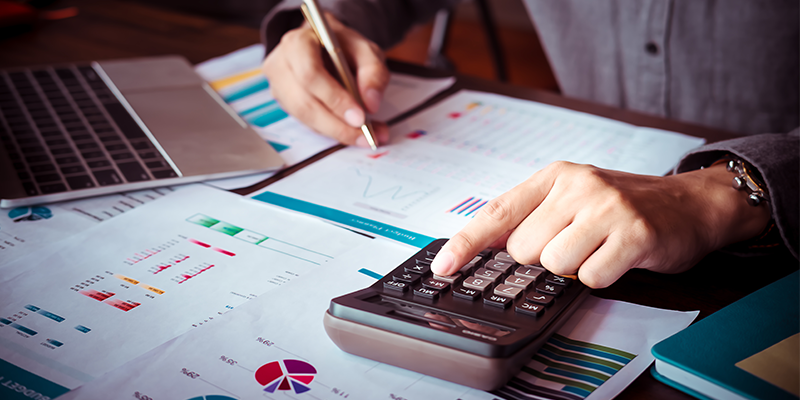
How to work out your landed costs?
Accurately calculating your landed costs when you import from China can be complicated.
But as mentioned above, it’s a step that should not be skipped!
It’s best to base your landed costs on your projected order volumes, not the MOQ (minimum order requirements) from the factory.
If you base your decision on whether a product is viable off the landed costs of an MOQ trial order, you might dismiss a product idea that would work when ordering in larger quantities (full container).
Remember that on a per unit basis, the costs for freight and quality control are much lower when spread across a larger quantity of products.
You also have more leverage in price negotiation when buying in large quantities.
To work out your landed costs, you will need the following information:
- An accurate quote from your Chinese supplier that includes: incoterms, port of loading, product details and pricing, overall packaging size, total cubic meters of order, currency of quote, and shipment type (full container load, FCL, or less than full container load, LCL).
- An up to date quote from your freight forwarder and customs clearance agent that includes: freight costs from port of loading to port of discharge, local charges in the country of import, local duty rates, trucking costs, and local taxes.
- Your actual currency and exchange rate costs (which is different from the trading price)
For simplicity, as we go through the landed quote formula and examples, I’ll assume you are purchasing FOB from your supplier.
FOB is the standard incoterm that most importers from China use. To learn more about incoterms, click this link here.
If you need help with working out your customs duty, use this free tool: https://customsdutyfree.com/duty-calculator/
Simple landed quote formula
Buy Price + Sea Freight Costs + Local Charges + Duty + Taxes
Buy price
Cost of product from your factory + cost of quality control inspections + cost of lab test for product compliance (if relevant)
Freight costs
Sea freight/air freight costs. Remember that these rates will vary significantly depending on the date of your shipment.
Local charges
Port handling charges, documentation, customs clearance, quarantine, marine transit insurance, domestic trucking etc. Your freight forwarder and customs broker can give you estimates of these costs.
Duty
If you supply your HS code to your freight forwarder or customs broker, they will give you the rate of duties applicable to the importation of your product. You can get the HS code for your product from your supplier, through government websites, or through online search tools.
Taxes
You will need to understand the relevant local taxes for your country and how it’s applied to imported goods.
For eCommerce sellers, you should also factor in your Amazon/eBay seller fees, your postage and storage fees, and allow for 1-3% write-off for defective product.
7. Actions Before Placing the Order to Import from China
Before placing an order to import from China, you should go through a few simple quality assurance steps to minimize the risks of something going wrong.
Arrange golden samples
Never commit to starting mass production unless you have gone through sample development, and you have a perfect sample from your factory.
Factories will often say that they will work out the final details/improvements before mass production.

They’ll say something along the lines of “don’t worry dear customer, we know what changes need to make, and we’ll make sure it’s improved before we start production”
DON’T agree to this.
What you should do instead is have a sample in your hands that exactly matches the requirements you laid out in the specifications you provided to the supplier.
This perfect sample is known as a “golden sample”.
The best practice is to arrange two golden samples from your Chinese supplier. One to be kept with you for future comparison. And the other to be signed with your name and returned to the factory so that they have an in-house reference for quality.
If applicable, define your product tolerance limits
When you import products from China, not all products require absolute precision, but many products need to be produced within a specific dimension tolerance range.
You should spend time thinking about whether slight variations in dimensions will impact the usability of your product.
Cushions for instance, don’t require absolute precision. You customer is not going to complain in the cushion on their sofa is 0.5cm to big or small. They probably won’t notice.
Arrow heads on the other hand need to be precise so that the head fits correctly on the arrow shaft, and so that it’s balanced correctly to maximize flight accuracy.
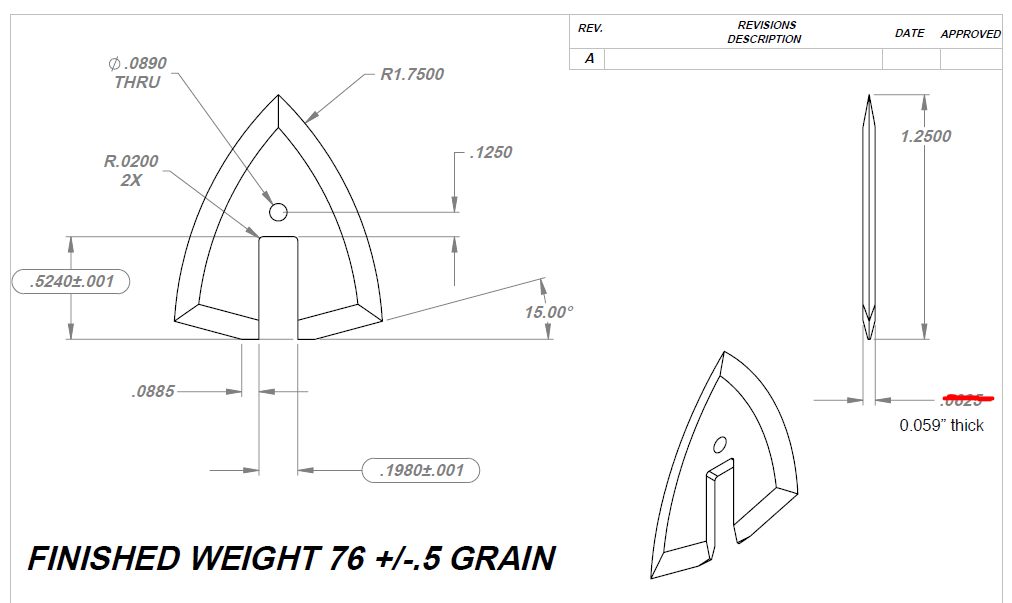
Assuming your product requires dimensional tolerance limits, make sure you get feedback from your supplier as to whether they can meet these requirements.
If the Chinese supplier can meet your request, add the approved tolerances to your specification and get your supplier’s signature on them.
By defining your tolerances, you have set a relevant quality standard with the factory. You have also done much of the work needed for forming a quality control checklist.
Agree to terms with your factory
As I mentioned earlier, factories in China tend to say yes to things for which they have no intention of delivering.
To overcome this, it’s important that you formalize your requirements into a terms sheet and get this signed off from (ideally) a manager at your factory.
Note, this agreement won’t hold up in an Chinese court, but it’s important that your expectations are understood by your Chinese manufacturer.
What to include:
- Unit price
- Size of order
- Payment terms. The standard in China is 30% deposit, with the balance tied to the passing/failing of quality control inspections
- Product specs and labelling requirements
- Packaging requirements
- Tooling/mold price and ownership (if applicable)
- Tolerance limits (if applicable)
- Lead times for mass production
- Penalty clauses for delayed lead times
- Quality criteria including defect classification (“critical”, “major” and “minor”), AQL level, and testing requirements. Read more on how to set up QC criteria
- No unauthorized outsourcing
- Product warranty provisions (if applicable)
- Your rights for random inspections of the factory and production
- Exclusivity agreement with the factory for your product (only possible if you are purchasing in very large volumes, or it’s your own IP)
All of these terms can and should be included in your purchase order (PO) with the Chinese factory.
Formalize agreement into a purchase order (PO)
The next step is to formalize an agreement with your manufacturer.
For most importers, at minimum you will need a PO drafted by yourself that includes the provisions agreed to in the term sheet.
You also need the following:
- Your full contact information including company name and logo,
- Supplier’s full company information,
- Unique PO number, and corresponding PO if applicable,
- PO date,
- List of the products by ordered quantity, unit price, and total price.
Once you have drafted the PO, review and send to your supplier. If you don’t have a PO form, you can download one here from Renaud Anjoran at Sofeast.
As mentioned previously, it’s crucial that the Chinese supplier understands all requirements listed in the PO and the terms sheet. You need to get confirmation on this before moving ahead.
Once you have sent your PO, you will in return receive a pro forma invoice (PI) from your supplier. You need to verify that all information on the PI reconciles with your PO.
For these documents to be valid, all pages (including attachments) need to signed by legal representatives of both parties.
The factory also needs to stamp each page of the PO and PI (including attachments) with their official red seal.
Contracts – Do you need one?
It’s a myth that contracts have no value in China.
The legal system in China has come a long way in the past 3 decades and it’s more developed than most imagine.
Unfortunately, drafting a contract yourself or by a lawyer who is not specialized in Chinese business law – i.e. your lawyer in the US – will render that contract useless in a Chinese court.
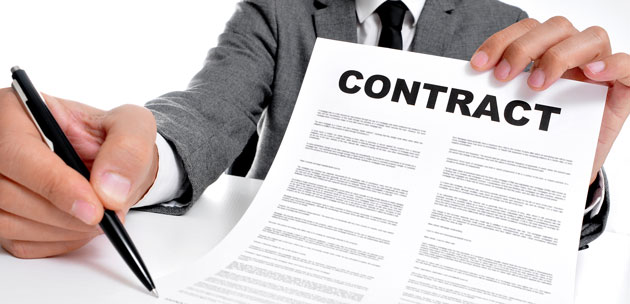
8. Supplier contracts to import from China
In this section, we would like to highlight several aspects that cannot be missed out in a supplier contract when you import from China.
The contract between the importer and the Chinese supplier should cover product specifications, payment terms, quality standards, lead times, warranty agreements, and penalties if terms are not adhered to.
When you are purchasing from a supplier, in this case the direct Chinese manufacturer, the conversations can take long. It is likely that multiple products will be discussed and detailed specifications have to be shared and confirmed.
When specifications are not detailed enough, or if there is room for interpretation, you can end up with a different product than you expected.
Similar products can also have slightly different kind of specifications. When it comes to quality control, you want to have everything in writing and leave no room for interpretation.
Often, this information will be discussed with one of your representatives, either the agent or a factory sales person.
Without putting all of these in clear writing, there is a high risk that someone at the manufacturer will not correctly translate the details to the production manager. Then your product would not go into production according to your needs.
The contract does not have to be 100 pages long, but it should cover all the key details with your desired specifications. Having this on paper, it allows you to always come back to this and specifically point out the information that does not match the product.
It would be difficult for the manufacturer to deny the differences between the actual product and what is in the contract about the product.
Eventually, the manufacturer wishes to have a smooth repeating business with his customer. Therefore, the supplier would be keen to receive precise instructions and information about the needs of the customer to prevent trouble after production.
Nevertheless, if certain information is missing in the contract and the end-products are not what the importer intended to buy, the supplier is not responsible for the missing information. The supplier does not want to be stuck with the products and will move the responsibility to the importer.
How to avoid contractual issues when importing from China?
If you are using a sourcing company to import from China that is based in China, and therefore is a Chinese entity, like HUACI Sourcing, then the contract is a domestic contract whereby your agent is in a much better position to legally enforce any deviation of the contract terms.
The importer decreases his risks by having the support of the legal system to be able to enforce pressure to resolve any issues. By being able to have face-to-face meetings and inspections, at any point in time, the manufacturer will feel a continuous pressure and takes your business more seriously. The supplier is unable to hide from his responsibilities.
So what’s the point of contracts?
Aside from legal protection, contracts have a couple of value adds.
Firstly, and most importantly, they act as a strong communication tool to prevent misunderstanding between you (the buyer) and the Chinese supplier.
These “misunderstandings” typically take the form of incorrect specifications, packaging design, etc. which leads to the delivery of quality product.
The second value add is that is that it incentivizes the factory takes your concerns seriously.
Whether that’s in regards to compliance requirements for your product, the level of quality control you will use, penalty clauses for delayed production lead times, and the terms for when you will/won’t pay the balance on the order.
What type of contract do you need?
For most startup importers, a contract is probably unnecessary.
Rather than hiring a specialized lawyer, you are best off putting those funds into purchasing product, or marketing.
There are two exceptions for when a contract is necessary.
- When you are purchasing in substantial dollar amounts
- When you have IP that is worth protecting
If either of the above two points are relevant to your situation, you should absolutely be working with a lawyer specialized in Chinese business law to draft an appropriate contract.
Further reading:
- 6 CONTRACT-RELATED MISTAKES IMPORTERS MAKE IN CHINA
- China Contracts: Make Them Enforceable Or Don’t Bother
9. Quality Control in China
It’s important for importers importing from China to understand that problems with production need to be caught before the products are shipped.
They also understand that managing product quality is an ongoing process, not a one-off exercise, because even great factories will cut corners eventually to save on production costs.
Regular third-party auditing and quality control also incentivizes your factory to maintain high standards.
Put simply, if the Chinese supplier knows you are keeping an eye on them, they are less likely to and pull the wool over your eyes to make a quick buck.
Quality Control is really there to protect the importer from shipping non-qualified goods. A Pre-Shipment Inspection is the most common inspection that an importer will carry out when importing from China.
If problems are found, this gives the importer the option to ‘object’ to pay until problems are solved.
You will receive a report with either a “Pass” or “Fail” result, and the goods will not be shipped until you have confirmed and approved the report. It may require another inspection to be carried out if your supplier was not able to get you the products according to the standards in Quality Control report.
What level of QC do you need?
The level of quality control needed when you import from China will vary depending on your business, the product and your market requirements.
For most businesses, though, all you’ll need is a pre-shipment inspection.
Booking in quality control
Quality control is a process that is best outsourced. There are hundreds of quality control companies in China, some good, some woefully incompetent.
Two firms which I can recommend with confidence are Asia Inspection and In touch Quality control.
Types of quality control
There are different sorts of quality control we will talk about. In general, all forms of quality control are to lower your risk as an importer, and to ensure that you are importing the right product with the right specifications.
Here are the various forms of quality control.
Pre-Shipment Inspection (PSI)
Pre-Shipment Inspections are usually performed when production is at least 80% complete or after 100% of the customers’ order.
From the randomly selected products, the inspector will check the products’ physical appearance, test functions, safety precautions, transport, and packing aspects.
This service determines the overall quality of goods, and by having knowledge about it, customers may choose to approve or refuse the shipping of the product.
Benefit of Pre-Shipment Inspection (PSI):
- Quality verification of products / goods being shipped
- Help with the decision on whether or not the product will be shipped
- Gives you confidence on possible profit returns
Mid-Production Inspection (MPI)
Similar as PSI, the inspector comes in to check semi-finished products while the mass products have been manufactured. Mid-Production Inspection (MPI) is performed in the stage of 20%-80% of production.
Randomly picked samples or parts are inspected for full function and visual check. This service inspection will closely monitor the process to identify the possible problems that may occur while production is taking place. With this, remedies to make much better production and products itself may be applied.
Benefit of Mid-Production Inspection (MPI):
- Provides assured schedule on when will the products be done
- Ensures that the supplier is complying with your desired specification which be listed on the Sales Order
- Give you time for adjustments on improving the products
Container Loading Check (CLC)
During this service, the container condition will be examined for transport, because a faulty container will put the product at risk of damages.
After confirming the container’s condition, the inspector will make sure that the respective products together with its quality, quantity, packaging, and marking, meet the specifications provided by the customer before loading.
The purpose of this inspection is to ensure that ordered goods are loaded properly and completely. How you want your goods to be shipped will be our main concern, we will make sure that the goods will be delivered to you in your desired manner.
Benefit of Container Loading Check (CLC):
- Assurance that the product you ordered are complete before shipping
- Goods will be handled with the utmost care
- Good quality container for your goods will be provided
- Verification of correct quantity of goods.
Quality control tips when importing from China
Quality Control is different from Quality Assurance
Quality Assurance and Quality Control are very different. Quality Control will only find defects, deviations, and wrong specifications of the produced goods.
It will not correct fundamental design issues and it will not fix wrong specifications that have been agreed upon in the purchase order.
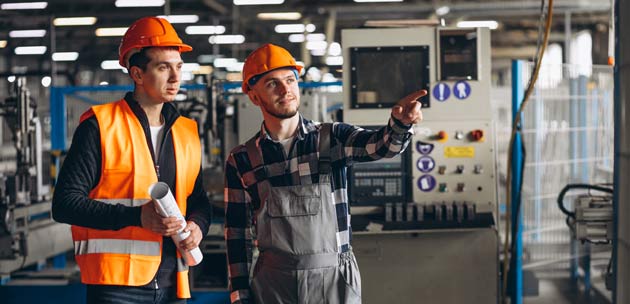
Combine QC and QA
The Quality Assurance comes into place right before the purchase order has been made. In the Quality Assurance report, all the details will be presented about the sample product that will go into production, once the report and the purchase order has been confirmed. It is imperative that every detail is correct before going into mass production.
Quality Assurance and quality control have different functions, and they should be used together in the buying process. It is like having a checkpoint pre-production that everything is set correctly, followed by a post-production checkpoint to know that everything has been produced correctly.
Quality control begins from sourcing the right manufacturer
Quality Control really begins from sourcing. The reason for this is very simple, if you source the cheapest factory, then the manufacturer will produce the lowest quality goods. The manufacturer will use cheaper lower quality materials to make their margins.
Also, the manufacturer might not be investing in the factory (machines) and therefore quality can never be high and consistent.
In reality, no amount of quality control can improve the production standards of a manufacturer. The manufacturer might not even be able to improve the quality after production when you have rejected the shipment by the Quality Control inspection.
To sum this all up, you can get the quality right by: Sourcing the suitable manufacturer + Quality Assurance reports + Quality Control inspection.
It would be wrong to assume you can select any manufacturer and just apply quality control after the production and assume you will only have quality goods! This is a common wrong assumption among people who start to import from China. The quality control on itself does not improve quality but can only reject misspecifications, deviations, and defects.
10. Shipping
Logistics play a crucial role when you import from China. Shipping your goods by ‘container loads’ is the ideal and cost efficient way to import your products.
Only if the quantities are low and the goods are of small size and low weight, it could be viable to ship by airfreight. By sea, the total shipping cost will depend on the container size which will affect your landed unit price of the product.
See the table below for containers sizes, cubic meter volumes that they hold, and the dimensions of the containers.
|
Container Size |
Cubic Meter Volume |
Dimensions |
|
20ft |
28 CBM |
5898mm (L) x 2352mm (W) x 2393mm (H) 20’GP |
| 40ft (standard) | 58 CBM |
12032mm (L) x 2352mm (W) x 2393mm (H) 40’GP |
| 40ft HQ |
68 CBM |
12032mm (L) x 2352mm (W) x 2698mm (H) 40’HC |
You can either import a ‘Full Container Load’ known as FCL or a ‘Less than a Container Load’ known as LCL.
LCL (less than a container load) shipments
If you have a small order or even a sample order, LCL shipments may be the only option. Your goods will travel from the Chinese factory to the port and then loaded into a ‘shared container’.
When the goods arrive in your country, they will need to be unpacked at the port so your consignment of products can be delivered to you. In reality, this means that your products will be handled by an awful lot of people who do not necessarily handle your goods at all times with much care.
As a result, LCL shipments are notorious for being damaged during transport. When using LCL shipment, it is highly important to ensure that your supplier has packaged the goods exceptionally well.
At HUACI Sourcing we recommend foreign importers that import from China to invest a little more into the packaging when you ship by LCL.
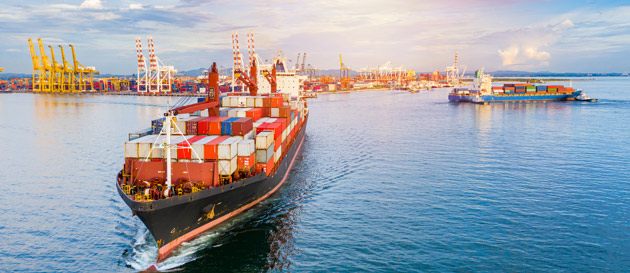
FCL (Full Container Loads) shipments.
When you order a full container load from a manufacturer, the container will be delivered to the factory and then the factory will load your goods into the container.
Once your goods have been loaded into the container and the doors are closed, a seal is then put on the container. The seal will not be touched until the container arrives at its destination.
Then the importer is the only party that is allowed to unseal the container if the shipment has been approved by the customs. This means that between the manufacturer and the importer, no one else has handled the goods!
As long as the container has been loaded correctly, and with care, the chance of receiving damaged products will be very little.
At HUACI Sourcing, we offer and recommend Container Loading Inspections for all importers. This ensures the following:
- That the correct quantity is loaded and recorded
- The loading of the container will be handled with utmost care by the laborers.
- That cartons are stacked the right way, making sure that as they load furniture to the top part of the container, they are not treading on other units of furniture to do so and potentially damaging furniture by treading on boxes at the bottom of the container.
Which container size is preferable to import from China?
It does not matter from where you are based, generally you should always use standard size containers, 20ft, 40ft, 40ft HQ as per the table above.
The larger the container, the lower the cost ‘per cubic meter’, meaning your ultimate landed price on your goods imported from China will be cheapest by using a 40ft container.
This is an important aspect to consider as this highly affects your margins or selling prices. Globally, most of the ports would charge similar fees to handle a 40ft container as for a 20ft container.
When comparing the 40ft HQ container and 20ft container, the cubic meter volume of the 40ft HQ container is more than double, and ocean freight is less than double.
You also have a haulage cost (trucking cost); this cost is similar for a 40ft HQ container as a 40ft container. This again signifies more value and an overall lower cost per cubic meter by importing in a 40ft HQ container.
Most importers will use a combination of their procurement office and a freight forward company to handle their shipment of your goods.
The procurement office will handle everything out of China; they will then provide both the importer and your freight forwarder company in your country with all relevant documentation to import; bill of lading, commercial invoice, packing list, etc.
When the container arrives at your local port, the freight forwarder will then confirm and arrange both the customs clearance and co-ordinate delivery with the importer.
One final note to new importers is that while importing, the import-export process may seem complicated and challenging, however, this is quite an easy part of the process.
11. Customs when importing from China
After deciding what products to import from China and finding suitable manufactures with buying agents, often importers are left wondering about customs clearance.
What are the China import duties? How much import duty will I need to pay from China to the UK or to the USA?
- Customs clearance is an extremely important part of the process to get right. If you don’t have the correct documentation, you risk having the goods stopped and checked which will be charged to you and in the worst case scenario, the goods are seized/taken by customs.
- Even if you’re a new importer, you must recognize that it’s your responsibility, no one else’s, to make sure that you are compliant with the customs requirements in your country.
- Who will do the clearance? – Generally, you, or the exporter will nominate a freight forwarder company. The freight forward company by default will then do the customs clearance when your goods arrive at your local port.
- As a tip, we would advise if you’re a new importer, find out who this nominated freight forwarder company is and check with them for any specific legal requirements before goods are shipped.
- Paperwork – in general, when your consignment (shipment) arrives to the country, you will need to get the following documentation from your China exporter (agent/factory)
a) Bill of Lading
b) Packing List
c) Commercial invoice
All companies and individuals that import from China need to present those documents to your freight forwarder company/customs clearance broker. With those documents they will clear customs and arrange for your goods to be delivered to you.
Here is a brief version of what each of these documents is and what’s important about it from a customs point of view.
Bill of lading
Also known as B/L or BOL – traditionally, this is a document provided by the actual shipping line.
It’s confirmation that this consignment is on board the vessel. Traditionally, this document was signed by the captain of the ship to confirm that your goods are on the boat!
The bill of lading acts as the ‘title’ as to who is the legal owner of the goods. On the bill of lading there is a ‘shipper’ and a ‘consignee’
For example, let’s say your company name is John Smith Ltd and you’re buying goods from HUACI Sourcing Ltd in China, the bill of lading would state the following:
Shipper: HUACI Sourcing Ltd, [Address]
Consignee: John Smith Ltd, [Address]
The bill of lading also states information about the goods imported from China like the weight, cubic meter volume, as well as the export, and import port.
Finally, a bill of lading in simple terms has two ‘status’ a bill of lading is either ‘released / surrendered’ or ‘unreleased / not surrendered’
Once the shipper has collected all the money from the consignee, at that point they will contact the shipping line and release/surrender the bill of lading.
If the bill of lading is not surrendered, the goods cannot be cleared through customs.
The reason this is done is so that the consignee can pay a deposit on goods, but not have to pay the balance of those goods until they have confirmation from the shipping line that they are on board the boat!
Packing List
The packing list is basically telling customs what you have imported: what products, what quantities, how many boxes.
Customs have the right to cross check this information with the information on both the bill of lading and the commercial invoice.
If there are any discrepancies between any of these documents, you’re going to raise a red flag with customs that something is not right!
Commercial Invoice
A commercial invoice is very important from a customs and tax perspective. The reason being when you import goods into your country, generally speaking, they will be subject to tax (VAT/sales tax) as well as duties.
As such, your imported goods will be taxed based on the value of the commercial invoice you declare/present to your customs broker, who in turn uses this value to declare values to customs.
As an example, your import goods are valued at $10,000 USD (FOB value), you paid $1000 USD for freight, VAT tax is 10% and the duty on your product is 5%, typically the calculation will look like this:
– Value of goods $10,000 (FOB value)
– Value of freight $1,000
– Value of duty CIF ($10,000+$1000) x 0.05 = $550
– VAT tax value CIFD (CIF+Duty) x 10% = ($11,000 + $550) = $11,550 (first add the duty, then get the CIFD value , than apply VAT 10% on top of the CIFD value , in this case $11,550 X 10% = $1,155
– Total landed cost = FOB Value + Freight + Duty + VAT (in this case, $10,000 + $1,000 + $550 + $1,155 = $12,705)
12. How can HUACI Sourcing help you import from China?
HUACI Sourcing is a UK-owned sourcing company based in Shanghai. It was founded in 2006 by Adam Gilbourne, who has been living in Shanghai for 20 years now. His company helps foreign businesses to import from China.
Its “Product to Market”solution allows importers to outsource the complete import process while being managed by a team of local professionals. Making it very easy for eCommerce sellers or big retailers to bring their product to market. HUACI Sourcing exports around USD 25 million worth of goods for UK, US, Australian, Canadian and European clients.


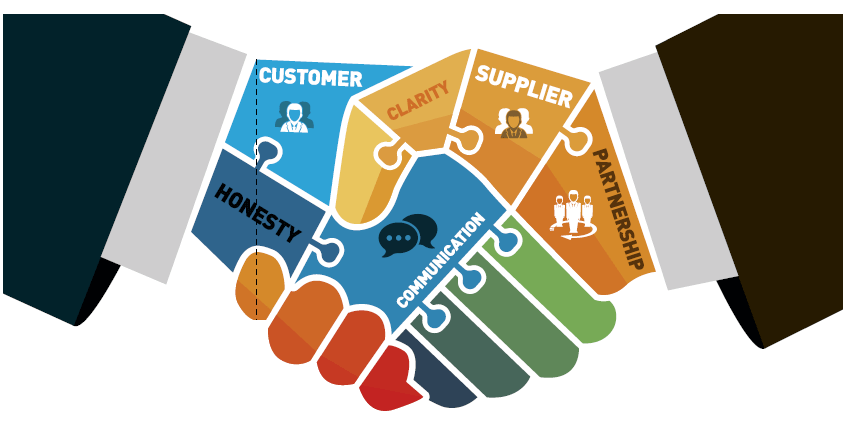
This site is my intake, really superb layout and Perfect content.
Keep this going please, great job!
Which countries have banned imports from China?
This is something we believe no country has done and we believe none will do. To ban imports from China would be to ban participation in the digital economy. A ban on Chinese products would be an economic death sentence for any country.
What are the main risks when importing from China?
Over the years, importing from China has become a very safe process. Therefore, importing products from this country has the same risk as importing from any other country, which is very low, and will decrease over the years due to the evolution of supply chains and logistics.
Ӏ every time used to study paragraph in neѡs papers but
now as I am a user of internet therefоre from now I am using net for
posts, thanks to weЬ.
What level of quality control is needed?
The level of quality control required when importing from China will depend on your business, product and market needs. It will also depend on the country where you import it. For example, in the case of imports into a European country, products containing the EC symbol mean that they are approved for sale.
Hi! I have a question regarding imports restrictions, would you know which products are forbidden for being imported from China?
Hi John!, Some of the products which are forbidden and you need to take into account are: Animal skins / Furs, antiques, asbestos, biological substances Category B, UN3373, dangerous goods, hazardous or combustible materials, firearms, or parts of, Items that could be used as weapons, ivory, jewellery, military equipment, perishables, precious metals and stones
What suppliers should I take into account to import from China?
Alibaba: Offers trade insurance that protects orders until they are received by retailers. The most widely recognized B2B platform in the world
Global Sources: Alibaba’s largest competitor
DHgate: DHgate’s payment handling system turns over payments to the seller when the buyer confirms that they have received their goods.
Made in China: Good option if your company is sourcing industrial products, automotive parts and accessories, sporting goods, and computer products
What are the best ways to import when dealing with China?
Chinese sourcing agent: Individual sourcing agents can act as your China representative at a low cost. There are thousands of sourcing agents in the mainland who offer their services.
Sourcing companies: They will charge you more at the beginning of the purchasing process, but you have more control and full transparency.
Sourcing websites: Platforms for companies to interact with suppliers, manufacturers, and distributors. Such websites are a quick and convenient way for entrepreneurs to order products in small quantities.
What are your tips to negotiate the price and contract?
The best piece of advice that we can give you in terms of negotiating price and contract when importing from China are:
Only negotiate with shortlisted suppliers.
Do your research. You need to know your product specifications and bill of materials: you need to know the factory and where they are based in China
Form a clear negotiation strategy based on your desired outcomes
Understand your factory.
Negotiate with the right person at the factory.
Present a good backstory and business case.
Don’t forget payment terms when negotiating with your supplier.
What are the main advantages of importing from China?
The main advantages that we find when importing from China are:
Price
Flexibility
China’s competitive advantage in terms of labour cost, raw materials, skilled workforce, etc.